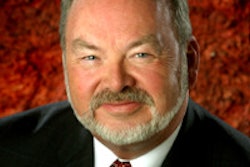With U.S. healthcare reform signed into law this past March, insurers, medical groups, and hospitals are now trying to figure out exactly how the legislation will affect them and how to comply with it. For radiology -- which has long been targeted for reimbursement cuts -- tracking these changes is crucial.
Is there anything good about the reform package for radiology? What's the bad news? And what about the new legislation is just plain ugly? AuntMinnie.com spoke to industry experts for perspective.
The good (or is it bad?)
The healthcare reform package consists of two bills: the Patient Protection and Affordable Care Act and the Health Care and Education Reconciliation Act of 2010. The legislation is pretty clunky in terms of actually reforming healthcare, according to W. Kenneth Davis Jr., an attorney at the law firm Katten Muchin Rosenman in Chicago. This may prove to be in radiology's favor.
"The first question, a legitimate one, is whether there's anything good in this legislation for radiology at all," Davis said. "I don't perceive it as healthcare reform, but rather as health insurance reform. If you unpack it, there are some things in there that are changed, but the bill did not fundamentally restructure how Medicare pays or how people provide clinical care."
The bills do offer more regulation, which may not be a bad thing, said Tom Greeson, a partner at Reed Smith of Falls Church, VA, who specializes in radiology-related regulatory matters.
"Regulatory initiatives have generally benefited radiologists, although certainly regulators' attempts to adopt rational and appropriate policies aren't always successful," Greeson said. "But I do believe that in both the short and long term, radiologists will do very well financially and in their practice environments under this legislation. In the short run at least, hospital-based radiologists should certainly experience less uncompensated bad debt from providing indigent services."
Equipment use rate set ...
The new bill sets the equipment utilization rate for the technical component of CT and MR studies performed in nonhospital settings at 75% beginning in 2011 -- still higher than the previous 50% but better than the 90% the Centers for Medicare and Medicaid Services (CMS) put in place on January 1 of this year, according to David Fisher, head of the National Electrical Manufacturers Association's (NEMA) Medical Imaging and Technology Alliance (MITA). Although nuclear medicine and PET were included in the mix in earlier reform bill drafts, the two modalities were spared a payment cut in the end.
"Generally speaking, we are happy with what ended up becoming law with the utilization rate, although it's still higher than we think is accurate, and it will lower the amount of payments per procedure," Fisher said.
It's possible that the increased volume of patients that the legislation produces, due to more people being covered, could offset these reimbursement cuts, according to Bob Maier, president and CEO of Brentwood, TN-based Regents Health Resources, a healthcare consulting firm that provides services to hospitals and physician practices.
"More patients will now qualify for some form of insurance, so although there will likely be lower reimbursement rates that will have a significant negative impact on MRI and CT, this may be offset by the increased patient volume," Maier said.
... but no SGR fix
Even though Congress finally landed on an equipment use rate, it failed to address the sustainable growth rate (SGR) issue in this legislation. The flawed SGR formula requires annual congressional action to postpone severe cuts under the Medicare Physician Fee Schedule (MPFS) -- and absent a long-term solution, the size of the cuts compounds annually.
The reason a permanent SGR fix was removed from healthcare reform was political: Not only would a permanent SGR fix cost too much, but it would most likely have sparked a major battle with physicians, according to Davis.
"Let's call a spade a spade," he said. "The Democrats took the SGR fix out of the equation because they wanted to keep the bill under $1 trillion. It's that simple. If they'd tried to bring up physician payments to where they'd actually be fully compensated as opposed to where the SGR puts their pay, it would have cost an additional $200 billion to $300 billion. And they didn't want to fight physicians. So they moved it off the table."
Self-referral victory?
On the physician self-referral front, industry watchers are seeing some success. Due to the reform legislation, physicians who self-refer for CT, MRI, and PET services will now be required to provide patients with a document that informs them of their right to go elsewhere for imaging.
"This notice requirement is unequivocally good for radiology," Davis said. "Radiology groups and independent diagnostic testing facilities [IDTFs] will benefit."
Also part of the legislation is a provision calling for the creation of a CMS Innovation Center, which would receive $10 billion in funding over the next 10 years. The center would test and evaluate patient-centered delivery and payment models, one of which is a model that varies payment according to physician patterns in ordering advanced diagnostic imaging services based on appropriateness criteria. Such methods could help erode the practice of self-referral.
The advent of accountable care organizations
But the Innovation Center also carries with it the possibility of accountable care organizations (ACOs). An ACO is a group of providers -- one or more hospitals, primary care physicians, and perhaps specialists -- held responsible for the quality and cost of healthcare for a population of Medicare beneficiaries. The healthcare reform legislation calls for the implementation of an ACO demonstration project, which could spark the proliferation of additional ACOs if the idea proves effective.
"What would ACOs mean for diagnostic radiology? Is the government going to go in the direction of paying an ACO, therefore restructuring the Medicare reimbursement method?" Davis said. "The speculation is that the easiest entity to deem an ACO is a hospital, and moving toward this model could prompt hospitals to try to incorporate independent medical practices under their auspices."
Under an ACO model, radiology groups might wonder if they would be next on the acquisition list. Maybe not in the near future, but the long-term effect of this kind of structure could be dramatic.
"Right now I'm not seeing interest from hospitals in acquiring radiology practices," Davis said. "But it's still legitimate on the part of radiologists to wonder whether, in five or 10 years, freestanding radiology practices will be viable."
Just plain ugly: MedPAC on steroids
The legislation does contain a serious bogeyman, according to Cynthia Moran, assistant executive director for government relations at the American College of Radiology (ACR) in Reston, VA -- something called the Independent Payment Advisory Board (IPAB).
"This is like [the Medicare Payment Advisory Commission or MedPAC] on steroids," Moran said. "It will be critical for all physicians to watch this. IPAB would have fast-track ability to make reimbursement changes with a process that would make it difficult for Congress to intervene."
Congress and the president would name IPAB committee members, who would then produce an annual report -- the first one being issued in 2014 -- that outlines whether Medicare spending is on target or over budget. The IPAB's recommendations would go into effect in January 2015.
There's a chance that the IPAB concept will be modified if the makeup of the current Congress changes as a result of the November elections, according to Moran. But because it promises to cut costs, shooting it down could be difficult.
"IPAB could be one of the first bellwethers as to how serious people are about repealing or changing sections of this legislation," she said. "But significant savings are being attributed to the use of IPAB, and that will make it harder to repeal."
The committee will be made up of 15 members who serve for six-year terms, Davis said.
"If I were a doctor, I'd keep a close eye on IPAB," he said. "It's more than MedPAC on steroids. It's a body that has the potential to become a rate-setting regime for Medicare."
Be prepared
What can radiologists do? Start getting very, very efficient, according to Maier.
"Radiologists can evaluate all levels of their practice to assess whether they are operating as efficiently as possible," he said. "It's time to take a very disciplined approach, looking at everything from technology and equipment to service agreements and hours of operation. The question should always be, 'Are we doing the best job we can?' "
Maier encourages his clients to identify places in their practices where protocols are still being managed manually -- such as scheduling, preauthorization, patient registration, or generating and distributing reports -- and move to automated processes.
"A lot of radiologists say they're already as efficient as they can be," Maier said. "But there are a whole host of processes that can hinder productivity on a daily basis."
Whether the healthcare reform legislation proves to be helpful or harmful to radiology remains to be seen, according to Greeson. And its effect will probably be a combination of both.
"This legislation focuses on quality," Greeson said. "If measured and paid fairly based on quality, radiologists should do very well versus other specialists, even those who think they can do imaging."
By Kate Madden Yee
AuntMinnie.com staff writer
May 13, 2010
Related Reading
Obama signs final healthcare changes, defends law, March 30, 2010
Healthcare changes head to Obama for signature, March 26, 2010
Final answer on equipment use rate: 75% in 2011, March 26, 2010
Healthcare changes headed back to House, March 25, 2010
Obama signs historic healthcare overhaul into law, March 23, 2010
Copyright © 2010 AuntMinnie.com




















